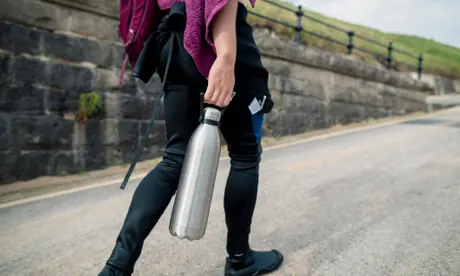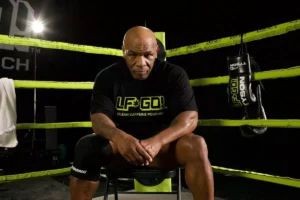Passengers on London Underground and Manchester’s Metrolink are urged to do it. Councils from Sunderland to Norfolk, Cardiff to Hounslow want their residents to do it. Many primary schools have been asking students to do it for ages. And now a growing number of high street outlets, including Greggs, Costa Coffee and Neal’s Yard Remedies, want to make it easy to do it, wherever you are.
Happily, lots of people in Britain are way ahead of them and are doing it already – carrying a refillable water bottle, that is. Whether for reasons of economy, hygiene, an urge to keep hydrated or a concern for the environment, for many people filling up a water bottle before they step out the door is now as habitual as picking up their keys or wallet.
In 2015, just 20% of people in the UK used a refillable water bottle, according to the anti-disposables campaign Refill. That figure is now almost 60%, they say. Topping up a bottle from a tap, once seen as the preserve of the stingy or abstemious, is also big business, with the refillable bottle market in Europe worth £1.5bn a year, a figure expected to grow by almost 40% by 2028.
The challenge, say activists, is to encourage people to do so, and cut down on the 10m single use water bottles bought every day in the UK, 700,000 of which are discarded as litter.
Working alongside more than 80 councils, and with a growing network of high street chains onboard, the Refill app showcases a network of 32,000 places across the UK – from municipal fountains to big chains to pubs to independent shops or businesses – where people can top up their bottles for free, no questions asked.
“We did some initial consumer research to understand why we were buying so much bottled water in Britain, especially given that we have some of the best-quality tap water in the world,” says Jo Morley, the head of campaigns at environmental group City to Sea, which runs the Refill campaign. “And we found out that back then [in 2015], it just was not possible to fill a bottle.
“I remember commuting to London and filling up my bottle in pub toilets. It just wasn’t the done thing to ask. And actually, that’s what came out in our research, that we Brits were just too polite. We didn’t like to ask for something for free.”
Their push to destigmatise and raise awareness is being embraced by a growing number of local authorities. Last Friday, Manchester city council and the Greater Manchester Combined Authority pledged to become “refill destinations”, opening up their buildings to provide more places where people can fill up water bottles for free. Sunderland, Southend, Norfolk, Waltham Forest, Hounslow and Cardiff have also signed up, says the organisation.
It is not just about litter, although Bournemouth city council has said its introduction of 150 free refill taps last year reduced waste on its beach by 19,000 bottles in July alone. In a warming British climate, easy access to clean, free water is also an issue of social justice and public health. The mayor of London, too, has installed 110 new water fountains across the City and an additional 28 at ZSL London zoo.
Some find the habit of carrying water easier than others, according to Jo Travers, a nutritionist based in London, who says younger generations are more attuned to the need to keep hydrated, and potentially attracted by the wide variety of designs now available.
“A water bottle is as an accessory, you can customise them and have whatever colour you like – these things do make a big difference to whether people want to carry a bottle of water around. But I definitely think that more of my younger clients understand about hydration – elderly people are often chronically dehydrated. There is definitely a bit of a generational divide.”
While the advice to drink two litres a day has been somewhat debunked, she acknowledges – it depends on body type and what else you are eating, for example – not drinking enough water can lead to sluggishness, constipation and difficulty regulating temperature. “So my general advice is to keep drinking. It’s very, very rare, almost nonexistent, to feel worse after having a drink of water.”
For the manufacturer of Chilly’s insulated bottles, however, the popularity of its collaborations with Liberty and Emma Bridgewater – not brands conspicuously targeted at Gen Z – shows that refillable bottles are not only for younger people, according to co-founder Tim Bouscarle.
The brand, founded in 2010, was at one point the fastest-growing private company in Britain, with sales tripling over the three years to 2018; Bouscarle says it now sells “millions” every year. “Our company mission is to accelerate the adoption and everyday use of reusable products – and I do think that we have encouraged millions of people over the years in the UK to make a change to their daily habits.”
For Morley, the scale of behaviour change in Britain has been “really phenomenal”, though there is much further to go. “It used to be totally normal to carry a plastic water bottle around. Now there’s a bit of a social stigma. For us, that was what we set out to do, to create that cultural shift.”
Source : TheGuardian











